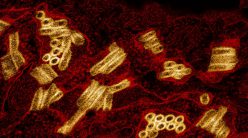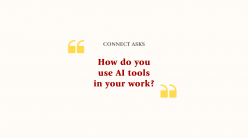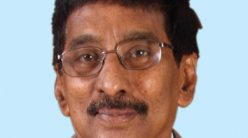Mariadasan Anthony Decroos (known as MA Decroos) dedicated more than 40 years of service to the Institute from 1965. He worked with five Directors, handling sensitive, confidential, and strategic planning assignments that contributed significantly to the Institute’s growth. When CONNECT reached out for an interview, the 85-year-old promptly agreed to reflect on his life and career – something he had recently considered documenting and publishing himself.
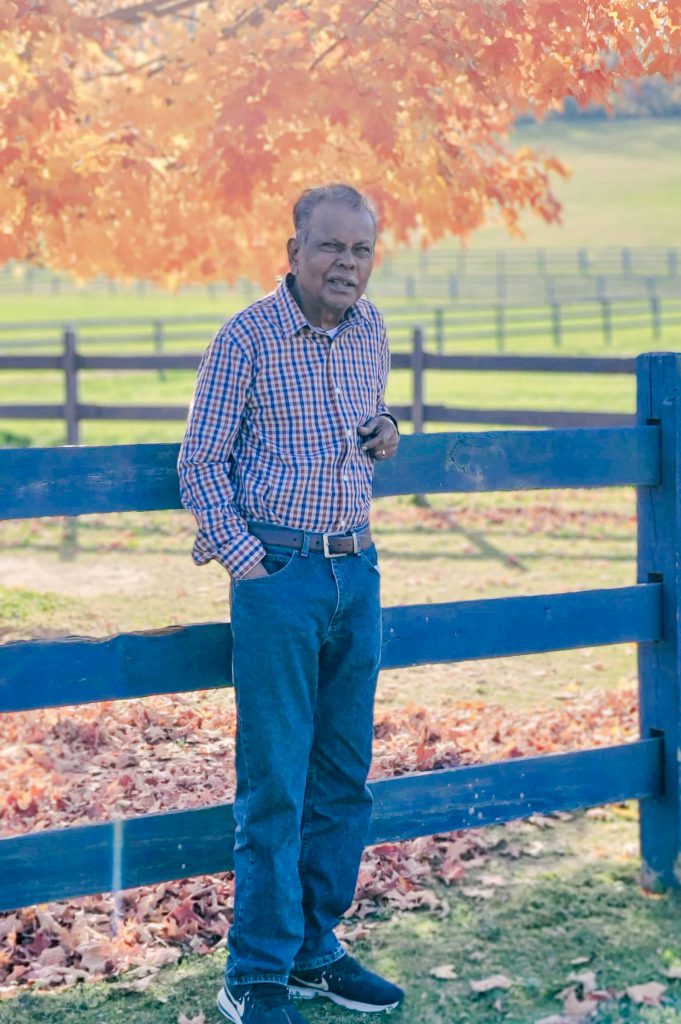
Tell us about your childhood.
I was born on 3 September, 1940, in Bengaluru. My father, George Mariadasan, an ex-serviceman, began his career as a trainee musician in the Royal Army Band, serving with dedication until 1947. He later joined the Ceylon Army Band, where he worked for 10 years before ultimately returning to his homeland, India. My mother, Susaimary, was a devoted homemaker, with a beautiful singing voice and a natural mastery of cooking.
I studied Science and Accounts at St John’s College, Colombo. I also completed stenography training in English in Colombo. When applying for a position at IISc, I underwent an additional shorthand skill test at the Institute.
How did you come to know about IISc, and when did you join?
In December 1964, after working as a stenographer at an insurance company in Colombo, I returned to Bengaluru. My uncle informed me that IISc was hiring clerical staff. I cleared the required tests and was appointed to the Students’ Section as a Lower Division Clerk (LDC) under the late R Vaidyanathan. With his guidance and training, I gained expertise in managing Senate affairs, scholarships, tuition fees, and oral examinations. I frequently took dictation and honed my skills in a wide range of clerical responsibilities, laying the foundation for my long and fulfilling career at the Institute.
When did you move to a stenographer role?
I was promoted to Stenographer in 1968. This was a significant turning point in my career, as it expanded my responsibilities beyond routine clerical tasks to include administrative functions like organising visits by international guests and dignitaries, including APJ Abdul Kalam, Rajiv Gandhi, and Kiran Mazumdar-Shaw. I had to pay great attention to detail while representing the Institute’s hospitality and professionalism.
One of my most sensitive responsibilities was the secure handling and confidentiality of sealed question papers
I was also entrusted with coordinating lectures and managing symposia, which involved preparing schedules, corresponding with speakers and delegates, arranging venues, and ensuring that events proceeded smoothly.
This phase sharpened my administrative skills and also gave me the privilege of interacting with eminent personalities from around the world.
You were then promoted to various other roles at the Institute. How did that happen?
I worked my way up from a clerical position to stenographer, supervisor, superintendent, personal assistant, and finally personal secretary. Although these were different streams, I was frequently reassigned and adapted as needed.
I consider myself a workaholic, ensuring that work is done to the highest standard – earning the appreciation of every officer I served.
In 1974, I was promoted to Office Supervisor and was entrusted with responsibilities in the Admissions Section. This was a period of transition for the Institute, as a new entrance examination system had just been introduced, significantly expanding the scope and urgency of the work.
My role involved overseeing a newly recruited clerical team, ensuring tasks were executed efficiently and in strict adherence to timelines. One of my most sensitive responsibilities was the secure handling and confidentiality of sealed question papers, which demanded the highest level of integrity and precision.
My work often extended well beyond regular office hours, and I used to stay late into the evenings and work on weekends. This instilled in me an even deeper sense of responsibility toward the Institute’s academic mission.
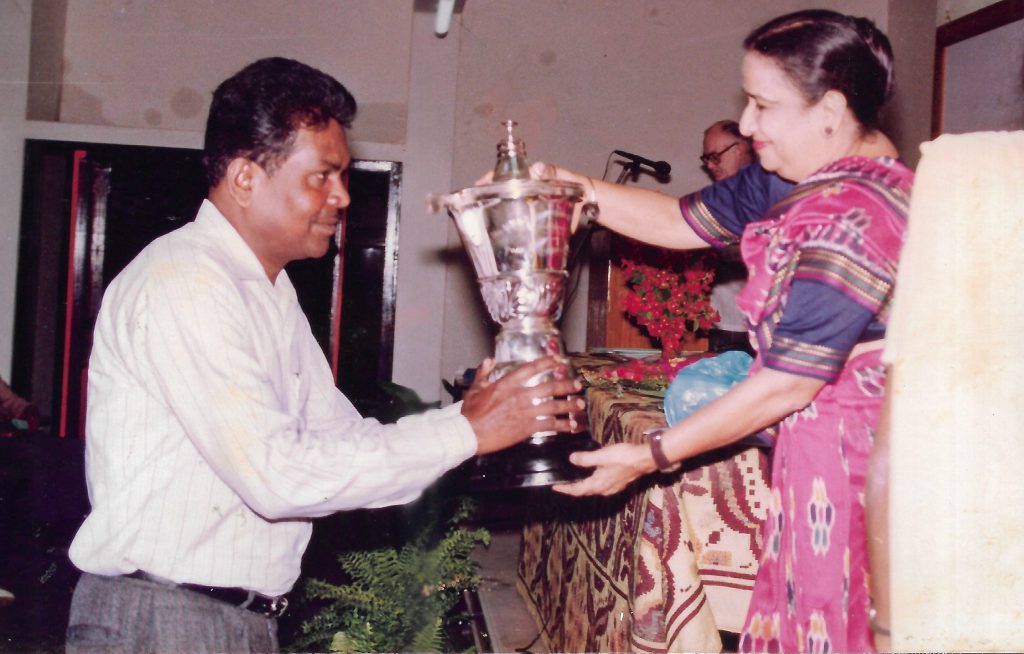
Eventually, you moved to the Director’s office. How was your experience working with five Directors?
In 1976, I was posted to the Director’s Office, working directly under Satish Dhawan, one of India’s most respected scientific leaders. This role demanded exceptional diligence, attention to detail, and a high degree of confidentiality.
It was during this period that I first met APJ Abdul Kalam, then serving as a Scientific Officer at DRDO. I remember personally arranging refreshments during his visits – a small gesture that became a lasting memory. When Kalam returned to IISc in 2002 to meet Goverdhan Mehta, he immediately recognised me and greeted me warmly, a moment I deeply cherish to this day.
From 1979 to 1982, I served in the Director’s Secretariat, providing secretarial assistance to S Ramaseshan, the then Joint Director of the Institute. During this period, I also interacted closely with S Ramakrishna (Aerospace Engineering), Chairman of Emerging Areas and a member of the Director’s Advisory Committee, who was also the son of S Bhagavantam, former Scientific Adviser to the Ministry of Defence and a former Director of IISc.
From 1981 to 1984, I served as S Ramaseshan’s personal assistant. I consider my association with him one of the defining experiences of my professional life. During this period, I helped organise several high-profile meetings attended by eminent personalities, including Nobel Laureates Linus Pauling and Dorothy Hodgkin. My responsibilities included managing significant correspondence, preparing documents, and coordinating critical planning discussions. These efforts contributed to proposals for the Sixth Five-Year Plan, initiatives in emerging and thrust areas, and the landmark project introducing India’s first supercomputer.
From 1984 to 1994, I worked closely with CNR Rao during his tenure as Director, providing comprehensive administrative support, which included handling both personal and professional documentation and assisting with his academic publications. I also collaborated extensively with MN Srinivasan, initially Chief of Administration and later Chief of Planning. Together, we implemented numerous innovations, a few notable ones like the computerisation of administrative processes, infrastructure development, including the JN Tata Auditorium, modernisation of telephone systems, and alumni fundraising campaigns, which successfully raised over Rs 1 crore from more than 2,500 alumni.
From 1992 to 1998, I continued my role with G Padmanaban, who became Director. I managed his appointments, travel schedules, meetings, and other crucial administrative tasks until his retirement in July 1998.
If I was not in the office, the Director [Goverdhan Mehta] would refuse to enter
In 1998, Goverdhan Mehta assumed the Directorship, and I was appointed as his Secretarial Assistant and later as his private secretary. My tenure was extended beyond the usual service period, allowing me to continue supporting him until his retirement on 31 July 2005. Being new to the Institute, he relied heavily on my support for administrative matters, trusting me implicitly. If I was not in the office, the Director would refuse to enter, saying, “Call me when Decroos is here.”
I finally retired fully in 2010, concluding a career of deep engagement with some of India’s most distinguished scientific leaders.
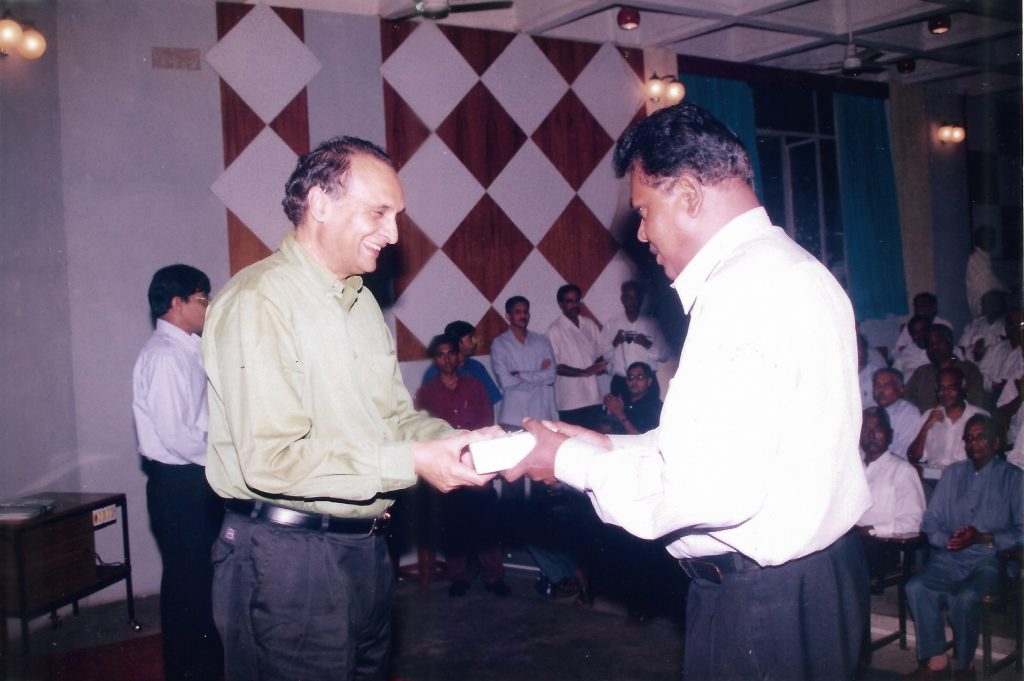
Which memories and experiences do you cherish the most from your time at IISc?
I received a lot of support from both the faculty and the administration. I am deeply grateful to the many former Registrars with whom I had the privilege to work closely, including SS Prabhu, T Nanjunda Rao, HV Venkataramaiah, PS Venkateswaran, BR Srinivasa Murthy, RG Nadadur, BV Ramakrishna, Udaya Balakrishnan, R Mohandas, and BK Subburaman.
The work itself was fulfilling, but campus life offered even more joy and enrichment. I actively participated in the Faculty Club and was honoured to win three state-level snooker tournaments, adding a sporting highlight to my professional life.
Living on campus was a truly rewarding experience, as it nurtured close friendships with neighbours who gradually became like an extended family. Even now, residing in JRD Tata Nagar, I frequently visit the Institute, carrying with me the fondest memories of an extraordinary journey.
Serving under five distinguished Directors was both an honour and a privilege. I retired proud of my small but significant role in IISc’s legacy.
Serving under five distinguished Directors was both an honour and a privilege
Can you tell us about your family?
I married Emelia Josephine on 19 February 1977, in Bengaluru. My wife, Josephine, has dedicated 37 years of her career to the Accounts Section at the Bangalore Baptist Hospital. Her compassion and commitment have been a pillar of support in our lives. Our daughter holds a Master’s degree in microbiology and an MPhil in Biotechnology. She completed her MSc project at IISc under the guidance of former Director G Padmanaban. Passionate about teaching, she later earned an MA in Education and is now a Grade 9-12 teacher at a reputed school in Bengaluru. Our son, Samson Vidyanand, earned his Bachelor’s degree in engineering in Bengaluru and a Master’s degree in mechanical engineering from the USA. During his undergraduate years, he completed a project under Udipi Srinivasan and worked briefly as a Project Assistant under the late SK Biswas at IISc before moving to the US. Today, he serves as an IT Director in Columbus, Ohio, USA.
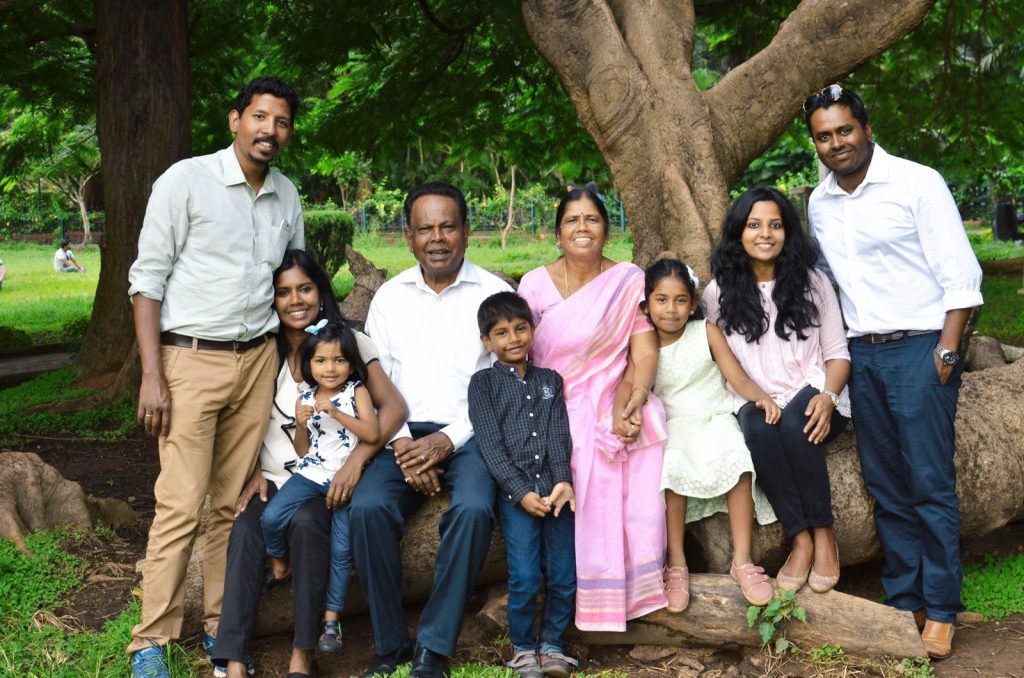
How do you spend your time in retirement?
After retirement, my association with IISc evolved into a new phase of meaningful service. From 2010 to 2016, I served as the General Secretary of the Pensioners’ Association. I regularly visited the Pensioners’ Office and the Faculty Club, where I indulged in my lifelong passion for snooker and billiards. These visits kept me closely connected to the vibrant campus life I had cherished for decades.
Transitioning from a 45-year professional routine to retired life was a gradual process. The absence of daily work rhythms and familiar schedules took some adjusting to, but I soon found joy in the simple yet profound pleasures of family life. I spent quality time with my wife, children, and grandchildren, sharing laughter, conversations, and treasured family moments. Learning from my grandchildren’s curiosity became one of my greatest joys.
Reading has always been a personal passion, particularly about current affairs, and retirement has allowed me to devote more time to it. One daily ritual I deeply enjoy is solving the cryptic crossword puzzle in the Deccan Herald, which keeps my mind sharp and engaged. I have also made an effort to keep up with emerging technologies and occasionally explore social media, thanks to the patient guidance of my tech-savvy grandchildren.
Even today, I look forward to my visits to the Canara Bank at IISc and the Health Centre, which give me a continued sense of belonging. A cup of coffee and a light snack at Nesara has become a comforting ritual. I particularly look forward to the annual Faculty Club lunch, where I can reconnect with old friends and relive memories.
By the grace of God, my wife and I have also been blessed with opportunities to travel widely. Together, visiting our son’s family in the USA, exploring South and Western Asia, and especially Europe. Each trip adds its own charm and learning to our lives.
(With special thanks to Dorothy Susan for facilitating the interview)
(Edited by Kavi Bharathi)
